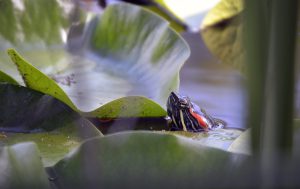Conservation presents challenges with any species, but a bird that travels 15,000 kilometres with unknown stopovers in a multitude of different countries creates a problem of global proportions.
The rufa subspecies of the red knot leaves every fall from different breeding grounds in the northern Canadian islands before making its way as far south as Tierra del Fuego, an island shared by Argentina and Chile off the southern tip of South America. Although shorebirds such as the red knot can fly for as many as eight days in one stretch, they need to sustain these epic migrations with a healthy diet – and even the smallest changes along this route could have a drastic effect on the bird’s ability to survive the journey.
“Any of these staging areas or stopping sites are as critical as some of their breeding sites,” says Mark Peck, an ornithologist at the Royal Ontario Museum. If there is a problem along the route, the birds will have to find a new way or perish. For example, Peck says, there was a big die-off of birds around the Argentina-Uruguay border at one point due to some kind of human-induced poison in the area.
One of the major challenges for researchers looking to conserve the endangered bird is finding out where exactly it stops during its yearly migrations. Through tracking different bird populations, Peck and other researchers have managed to map many of their hangouts but the specifics around areas such the rufa’s winter pit-stop somewhere on the unpopulated northeast coast of Brazil are still unclear.
“If you know where the birds are, and you know where they’re feeding and staging, it gives you an opportunity to explore possible dangers of those areas,” Peck says.
Peck worries human interference continues to affect the bird in a number of different ways. The rufa may face environmental degradation in its Gulf of Mexico staging areas due to the British Petrol oil spill in 2010. Around the late 1990s and early 2000s the horseshoe crab harvest in Delaware Bay began to affect the supply of the crab eggs the rufa and other shorebirds used to fatten up before their long voyages. “It’s been a bit of a fight for the birds since the turn of the century,” Peck says.
Due to their long journeys, shorebirds like the red knot don’t often vary their stopover areas. “Adapting quickly to an unforeseen disaster is not something the birds do well,” Peck says.
But he’s confident that efforts to fill in the remaining blank spots on the red knot’s migratory map will help conservationists protect the animal. “We’re getting a much better understanding of these birds’ migration routes. Once we have that clear, we can look into those areas and see potential problems.”




